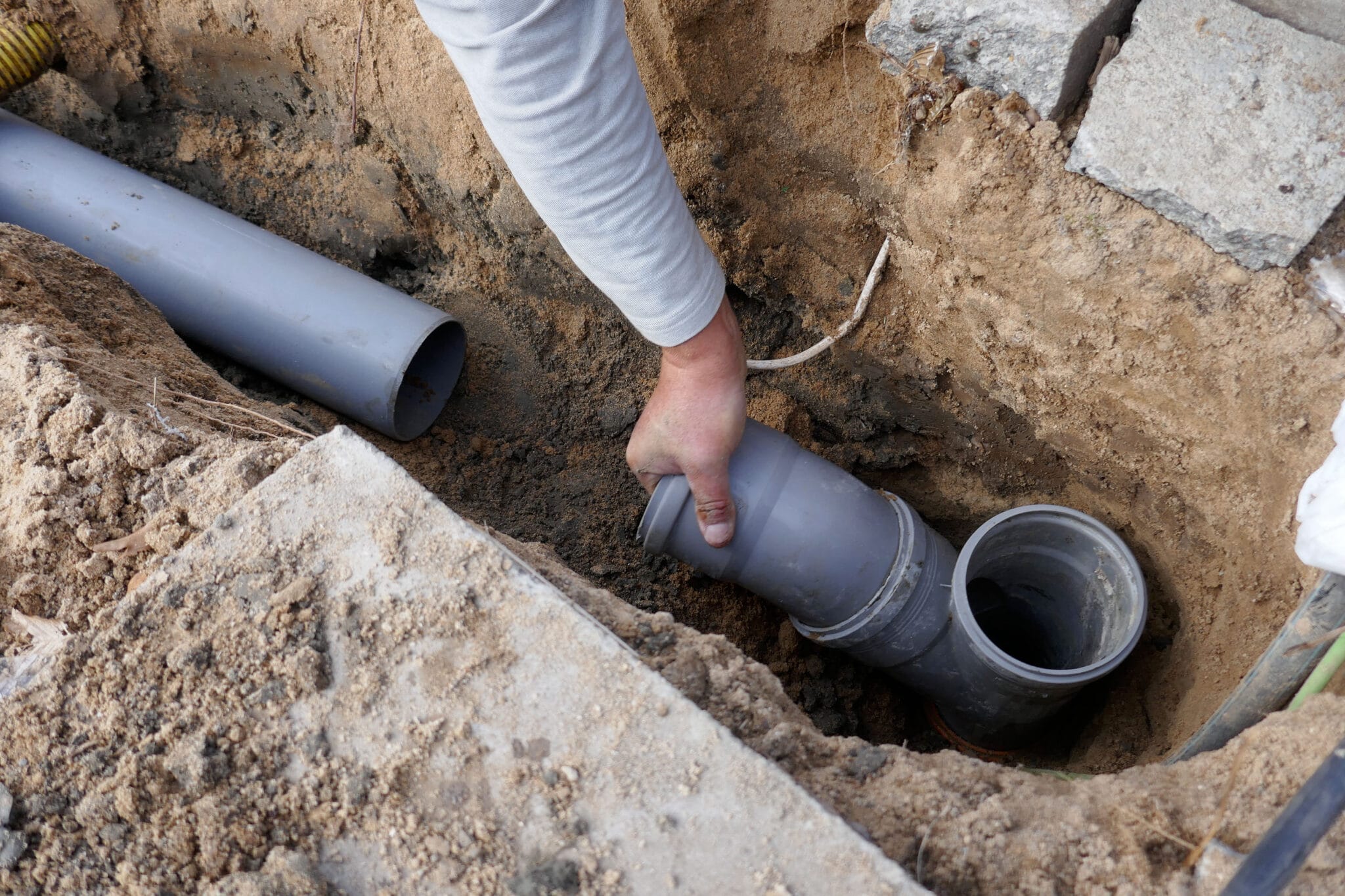Mastering the Use of ABS Cement: A Comprehensive Guide
In the world of plastic adhesives, ABS cement stands tall as a versatile and reliable bonding agent. Comprised of acrylonitrile butadiene styrene, ABS cement boasts exceptional properties that make it an ideal choice for various applications. From plumbing to automotive repairs, this adhesive has earned its reputation as a go-to solution for joining ABS plastic components. In this article, we delve into the various applications of ABS cement and showcase its wide-ranging utility across different industries. We will also provide a step-by-step guide on how to use ABS Cement effectively and safely.
If you need help finding ABS Cement for any of the versatile applications listed below, see our product review article here.
Versatility Unleashed: Exploring the Many Applications of ABS Cement
Plumbing and Drainage Systems
One of the most common applications of ABS cement lies in the field of plumbing and drainage systems. ABS pipes and fittings are widely used in residential, commercial, and industrial plumbing projects. ABS cement creates secure and leak-proof connections between ABS pipes, ensuring a smooth flow of water and waste through the system. Thanks to its quick-setting nature, ABS cement allows plumbers to complete installations efficiently, reducing downtime and increasing productivity.
Automotive Repairs
In the automotive industry, this specialized cement finds extensive use in repairs and modifications. ABS plastic is commonly used in various car components, such as bumpers, trim panels, and interior parts. When these parts suffer damage or need customization, ABS cement comes to the rescue. It allows mechanics and automotive enthusiasts to bond ABS components seamlessly, restoring or enhancing the vehicle’s appearance and structural integrity.
DIY Projects
ABS cement caters to the creative minds of DIY enthusiasts. Whether crafting prototypes, constructing models, or designing toys, this adhesive enables hobbyists to bring their creations to life with ease. Its user-friendly application and ability to bond ABS plastic parts securely make it an essential tool in the DIY arsenal.
Consumer Goods and Electronics
ABS plastic plays a pivotal role in the production of consumer goods and electronics. From handheld devices to household appliances, ABS components are prevalent due to their durability and impact resistance. This trusty joing compound ensures the reliable assembly of these parts, contributing to the overall longevity and performance of the products.
Fabrication and Manufacturing
ABS cement finds its place on the factory floor, where manufacturers rely on its adhesive prowess for various production processes. From bonding ABS sheets for signage and displays to constructing enclosures for electrical equipment, this joint compound streamlines fabrication operations, enhancing efficiency, and structural integrity.
Art and Craft
The artistic and crafting communities embrace this specialized adhesive for its ability to fuse ABS plastic seamlessly. Artists and craftsmen use this adhesive to create sculptures, artworks, and intricate designs with ABS plastic, expanding the horizons of creative expression.
Medical Devices
In the realm of medical devices, ABS cement plays a crucial role in the assembly of ABS components for disposable and reusable equipment. Its biocompatibility and reliable bonding ensure that the medical devices meet stringent quality and safety standards.
Conclusion
As a multifaceted adhesive, ABS cement has proven its worth across numerous applications and industries. Its ability to bond ABS plastic components securely, coupled with a quick-setting time and ease of use, makes it an indispensable asset in plumbing, automotive, manufacturing, and DIY projects. From the art studio to the factory floor, this specialized cement opens doors to innovation and reliability in various creative and industrial endeavors. As technology advances and ABS plastic continues to find new applications, ABS cement will undoubtedly remain a staple bonding solution, empowering engineers, artisans, and enthusiasts to turn ideas into reality.
Step-By-Step Guide on How to Use ABS Cement Effectively and Safely
Applying ABS cement effectively is crucial to achieve a strong and reliable bond between ABS plastic components. Follow this step-by-step guide to ensure proper application and successful bonding:
Materials Needed:
- ABS cement (suitable for ABS plastic)
- ABS parts to be bonded
- Sandpaper or file (optional, for surface preparation)
- Clean cloth or paper towel
- Proper personal protective equipment (PPE) such as gloves and safety glasses (for handling the adhesive)
Step-by-Step Guide to Applying ABS Cement:
- Surface Preparation (optional): If the ABS surfaces are rough or have irregularities, lightly sand them with fine-grit sandpaper or use a file to create a smooth bonding surface. This step can enhance the bond strength by increasing the surface area for adhesion. However, ABS cement can create strong bonds even without surface preparation.
- Clean the Surfaces: Before applying the adhesive, clean the ABS surfaces thoroughly to remove any dirt, grease, or contaminants. Use a clean cloth or paper towel moistened with a mild solvent like isopropyl alcohol to clean the surfaces effectively. Ensuring the surfaces are clean and dry is essential for proper adhesion.
- Shake or Stir the Cement: If the ABS cement has been sitting for a while, give it a good shake or stir to ensure the solvent and ABS particles are well-mixed.
- Open the Container: Open the container of ABS cement or plastic glue. Take care not to spill or waste any of the adhesive.
- Apply the Cement: Use the applicator that comes with the ABS cement or a suitable brush to apply an even and thin layer of the adhesive to one of the ABS surfaces to be bonded. Be sure to cover the entire bonding area evenly.
- Join the Parts: Press the treated surface against the other ABS part that needs to be bonded, aligning them as needed. Apply gentle pressure to ensure good contact between the mating surfaces. Once they come into contact, the cement will start to dissolve the plastic and create a bond.
- Hold in Place: Hold the parts together for the recommended holding time as specified by the manufacturer. This allows the adhesive to set and initiate the bonding process. Avoid moving or disturbing the parts during this time.
- Cure Time: After the initial holding time, allow the bonded parts to cure fully. The cure time will depend on the specific adhesive used, but it is generally recommended to wait at least 24 hours before subjecting the bonded assembly to any significant stress or load.
- Clean-Up (if necessary): If there is any excess adhesive that squeezed out during the bonding process, you can carefully clean it up with a suitable solvent or by gently scraping it away. Always follow the manufacturer’s guidelines for cleaning up the adhesive.
- Safety Precautions: Throughout the bonding process, ensure proper ventilation in the work area to minimize exposure to fumes from the solvent-based adhesive. Use appropriate personal protective equipment (PPE) as recommended by the adhesive manufacturer.
Remember to follow the specific instructions provided by the manufacturer of the ABS cement for the best results and to ensure the durability of the bonded ABS components. Proper surface preparation, cleaning, and handling are essential for achieving a strong and reliable bond between ABS parts.
Frequently Asked Questions
Does ABS cement work on all plastic?
No, ABS cement does not work on all types of plastic. This specialized cement is specifically designed for bonding ABS (acrylonitrile butadiene styrene) plastics, and it will not effectively bond other types of plastic materials.
Each type of plastic has its unique chemical composition and properties, and different adhesives are formulated to work with specific plastics. ABS cement contains solvents that are designed to soften and dissolve ABS plastic, allowing it to create a strong bond between ABS surfaces when they fuse together upon solvent evaporation. However, these solvents may not be compatible with other types of plastics, leading to weak or ineffective bonds.
Using ABS cement on plastics other than ABS can result in poor adhesion, weak joints, and potential failure of the bonded parts. Some plastics, like PVC (polyvinyl chloride) or polyethylene, require different types of adhesives or welding methods tailored to their chemical composition and bonding characteristics.
If you need to bond different types of plastics together, it is essential to use the appropriate adhesive specifically designed for those materials. Always check the manufacturer’s recommendations and product labeling to ensure that the adhesive you choose is compatible with the specific types of plastic you want to bond. Following the correct bonding procedures will help ensure strong and reliable connections between the plastic components.
What are some safety tips when using ABS cement?
Using ABS cement safely is crucial to protect yourself and others from potential hazards associated with the adhesive and its application. Here are some essential safety tips to follow when handling this product:
- Work in a Well-Ventilated Area: ABS cement contains volatile organic compounds (VOCs) that can emit strong fumes. Always work in a well-ventilated area, such as outdoors or in a room with open windows and proper air circulation, to minimize exposure to fumes.
- Use Personal Protective Equipment (PPE): Wear appropriate personal protective equipment, including safety glasses or goggles, gloves, and a respirator or mask, if necessary. PPE will help protect your eyes, skin, and respiratory system from potential contact with the adhesive and its fumes.
- Avoid Skin and Eye Contact: This powerful adhesive can cause irritation or skin sensitization upon direct contact. Avoid getting the adhesive on your skin, and in case of accidental contact, wash the affected area with soap and water immediately.
- Handle with Care: ABS cement is flammable and may have some hazardous properties. Store the adhesive in a cool, well-ventilated place, away from open flames, heat sources, and direct sunlight. Keep it out of reach of children and pets.
- Read and Follow Manufacturer’s Instructions: Always read and follow the instructions provided by the manufacturer on the adhesive container or packaging. This includes information on application, curing time, and safety precautions.
- Do Not Inhale Fumes: Avoid inhaling the fumes emitted by this toxic product. Breathing in the fumes can cause respiratory irritation and other health issues. If working indoors, consider using a fan or extractor to help disperse the fumes.
- Avoid Smoking: Do not smoke while using this product or in its vicinity. Smoking near flammable substances can lead to fires or explosions.
- Keep Food and Beverages Away: Do not eat or drink while using this cement, as accidental ingestion can be harmful. Always wash your hands thoroughly before handling food or drinks after using the adhesive.
- Properly Dispose of Waste: Dispose of any unused or excess product and adhesive-soaked materials properly according to local regulations. Do not pour the adhesive down drains or dispose of it in the trash.
- Store with Caution: Close the container tightly after use to prevent the adhesive from drying out or spilling. Avoid storing ABS cement near sources of heat or direct sunlight.
By adhering to these safety tips, you can use this product effectively and reduce the risk of accidents or health hazards associated with its application. Remember to prioritize safety and take the necessary precautions to ensure a safe working environment when using ABS cement.
What are the advantages of ABS cement?
ABS cement offers several advantages, making it a popular choice for bonding ABS plastics in various applications. Here are the key advantages of ABS cement:
- Strong Bond: This specialized adhesive creates a robust and durable bond between ABS plastic materials. When applied correctly, the cement chemically softens the ABS surfaces, allowing them to fuse together as the solvent evaporates, resulting in a solid and reliable joint.
- Quick Setting Time: This cement typically has a fast setting time, allowing the bonded parts to reach initial strength quickly. This property is beneficial for completing projects efficiently and minimizing downtime.
- Easy Application: ABS cement is usually supplied in user-friendly applicators, such as brush-in-cap bottles or squeeze bottles. The ease of application simplifies the bonding process, even for those without extensive adhesive experience.
- Versatility: This tried and trusty adhesive can be used in various industries and applications, including plumbing, drainage systems, automotive repairs, and general assembly of ABS plastic components.
- Good Chemical Resistance: The bonded joints created by this cement often exhibit good resistance to a wide range of chemicals and substances, making it suitable for applications where exposure to liquids and chemicals is expected.
- Cost-Effective: ABS cement is relatively affordable, making it an economical choice for bonding ABS materials compared to other methods, such as heat welding or mechanical fastening.
- Seamless Joints: When applied properly, ABS cement creates seamless joints, which not only enhance the appearance of the finished product but also minimize potential leak points in plumbing applications.
- Releasable Joints: In certain cases, ABS cement can be used to create joints that are initially strong but still somewhat releasable. This allows for disassembly and reassembly if needed, though the bond will not be as strong as before.
- Widely Available: ABS cement is commonly available at hardware stores, home improvement centers, and plumbing supply outlets, making it accessible for various projects.
Despite these advantages, it’s essential to consider the specific requirements of your project, including environmental conditions and application demands, to ensure ABS cement is the appropriate adhesive for your particular needs. Proper surface preparation and following the manufacturer’s instructions are crucial for achieving the best results and ensuring the durability of the bonded ABS components.
What are the disadvantages of ABS cement?
While ABS cement is a useful adhesive for bonding ABS plastics and has many advantages, it also has some disadvantages that should be considered:
- Strong Odor: This product contains volatile organic compounds (VOCs) as part of the solvent, which can emit strong odors during application. These fumes can be irritating to the eyes, nose, and throat and may cause headaches or dizziness. Adequate ventilation should be maintained to minimize exposure to these fumes.
- Flammability: The solvents in ABS cement are flammable, presenting a fire hazard during storage, handling, and application. Precautions should be taken to keep the cement away from open flames and heat sources, and it should be stored in a cool, well-ventilated area.
- Health Hazards: In addition to the strong odor, the VOCs in this specialized cement can be harmful if inhaled or come into contact with the skin. Prolonged or repeated exposure may lead to health issues, such as respiratory irritation or skin sensitization. Proper personal protective equipment (PPE) should be used when handling the cement to minimize risks.
- Environmental Impact: The solvents in ABS cement can contribute to air pollution and have adverse environmental effects. It’s essential to follow proper disposal guidelines for any waste or excess material to minimize environmental impact.
- Limited Compatibility: ABS cement is specifically formulated for bonding ABS plastics and is not suitable for other types of plastics or materials. Attempting to use this cement on incompatible materials will result in weak or ineffective bonds.
- Setting Time: ABS cement has a relatively short setting time, meaning it dries and cures quickly. While this can be advantageous for completing projects faster, it also leaves less time for repositioning parts once they have been joined. Careful alignment is necessary during assembly.
- Bond Strength in Extreme Conditions: While ABS cement provides strong bonds under normal operating conditions, its performance may degrade in extreme temperatures, high pressures, or exposure to certain chemicals. Consider the application requirements and potential stress factors when choosing ABS cement for critical applications.
Despite these disadvantages, ABS cement remains a commonly used adhesive for joining ABS pipes and fittings due to its effectiveness in creating reliable connections. By following proper safety guidelines and using the cement in appropriate applications, many of the potential drawbacks can be managed effectively.
editor's pick
news via inbox
Stay one step ahead with exclusive tips, guides, and offers delivered directly to your inbox.
Sign up for our newsletter and elevate your home improvement game today!


